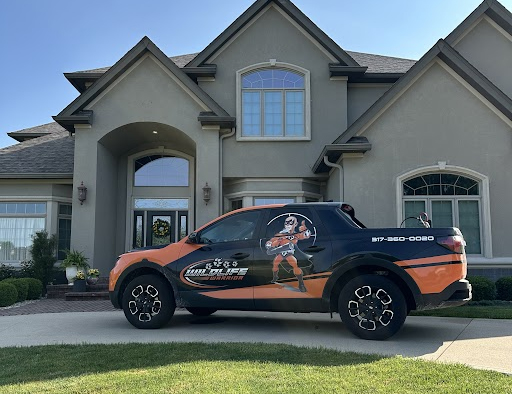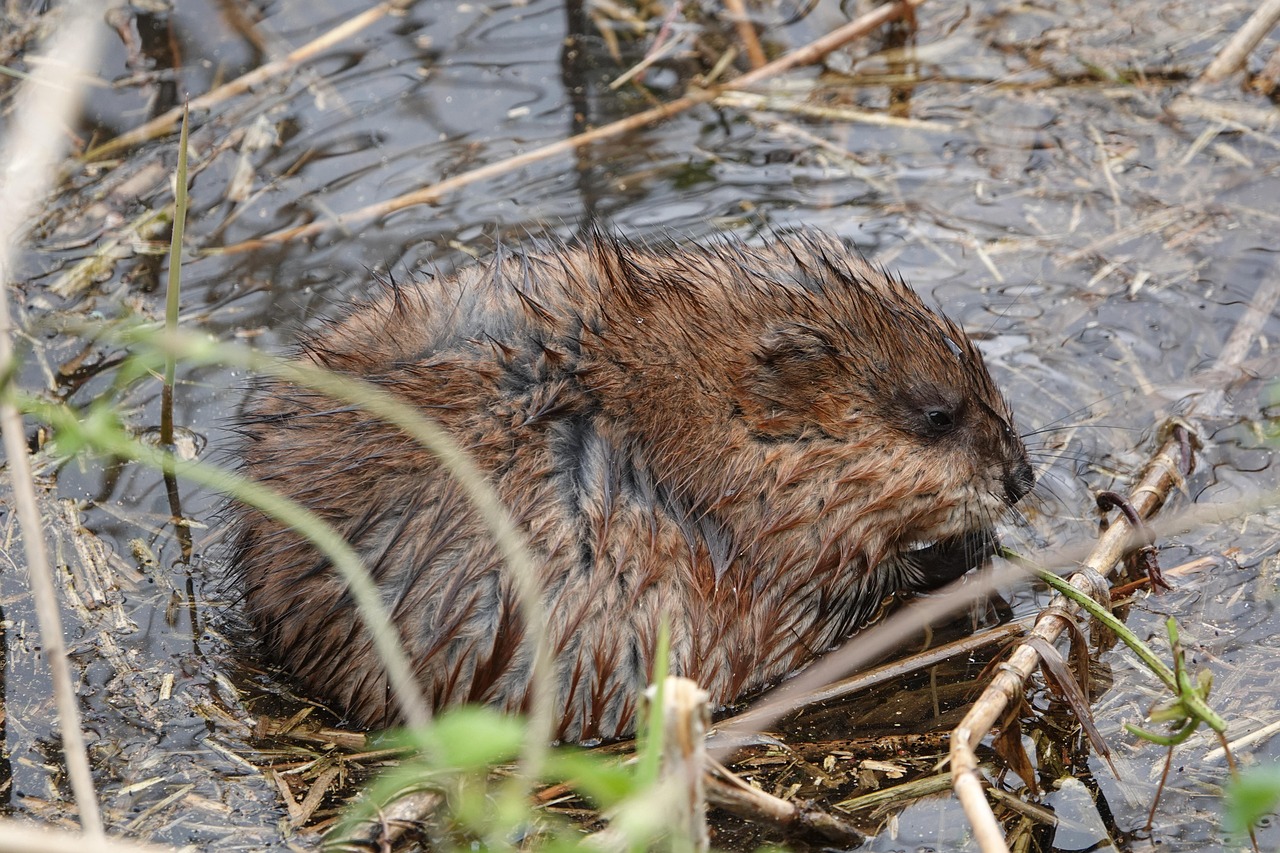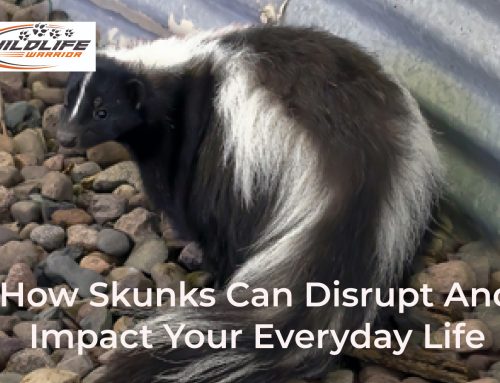Muskrats are engineers of destruction for any property with water features. These semi-aquatic rodents burrow into pond banks, chew through irrigation lines, and destabilize drainage systems. Left unchecked, their activities can lead to flooding, soil erosion, and structural collapse.
Recognizing early warning signs is critical to safe muskrat removal, preventing expensive repairs and ecological damage.

Why Muskrats Target Your Property
Muskrats seek three things: food, shelter, and calm water. They’re drawn to ponds, lakes, streams, and even artificial water features like retention ponds or decorative fountains. Once they establish a territory, they dig extensive burrow systems into banks and dams. Their sharp teeth and strong claws allow them to tunnel through soil, plastic liners, and even some types of concrete over time.
The Hidden Dangers of Muskrat Activity
While muskrats might look harmless, their burrowing creates serious risks:
- Bank collapse: Underground tunnels weaken soil structure, leading to sudden land erosion
- Flooding: Compromised dams or levees can fail during heavy rains
- Pipe damage: Chewed irrigation lines or drainage pipes cause water loss
- Contamination: Burrows near septic systems can mix waste with groundwater
- Foundation issues: For homes near water, tunneling undermines structural integrity
The real cost isn’t just repair bills. It’s the cascading effects on your property’s ecosystem and safety.
Key Signs of Muskrat Presence
Spotting muskrats requires understanding their habits. Look for these indicators:
- Burrow Entrances – Football-sized holes near water’s edge, often hidden by vegetation. Entrances typically sit 6-18 inches below the water surface with underwater access tunnels.
- Floating Vegetation – Muskrats build feeding platforms from cattails, reeds, and grasses. These flat, floating mats appear near active burrows.
- Troughs in Grass – Visible trails (4-6 inches wide) where muskrats drag vegetation from feeding sites to water.
- Bank Slumping – Sections of shoreline that appear sunken or uneven, indicating tunnel networks below.
- Chewed Plants – Clean, angled cuts on aquatic vegetation like lilies or bulrushes, unlike the ragged edges left by deer or rabbits.
- Footprints – Webbed hind feet with long toes leave distinct prints in mud. Front paws show four finger-like toes.
- Scat – Dark green, pellet-shaped droppings near feeding areas or latrine sites.
Immediate Actions When You Spot Damage
If you notice any warning signs:
- Stop using affected water systems – Turn off pumps or irrigation to prevent further leakage
- Document damage – Take photos of burrows, chew marks, and erosion patterns
- Check neighboring properties – Muskrats rarely stop at property lines
- Avoid DIY removal – Improper handling can worsen damage and violate local wildlife laws
- Contact specialists – Professionals assess risks and create tailored removal plans
Repairing Muskrat Damage: A Multi-Step Process
Effective repair goes beyond filling holes. It requires understanding why muskrats chose your property and making it less attractive:
- Phase 1: Removal
Humane trapping relocates muskrats without harming them. This step must happen before repairs to prevent new animals from moving into existing burrows. - Phase 2: Bank Stabilization
Use layered rock (riprap) or coir logs to reinforce eroded areas. These materials resist digging while allowing native plants to regrow. - Phase 3: Exclusion Systems
Install L-shaped metal barriers along vulnerable banks. Bury mesh fencing 18 inches deep with a horizontal apron extending 1-2 feet into the water. - Phase 4: Vegetation Management
Remove cattails and reeds near banks. Plant less palatable species like pickerelweed or soft rush to reduce food sources. - Phase 5: Water Level Control
Muskrats prefer stable water levels. Installing adjustable overflow pipes or aeration systems makes the environment less ideal.
Preventing Future Muskrat Problems
Make your property less appealing through strategic changes:
- Install motion-activated lights near water edges (muskrats avoid bright areas)
- Use ultrasonic repellents designed for aquatic environments
- Maintain steep bank slopes (45-degree angles deter burrowing)
- Add predator decoys like heron or owl statues near trouble spots
- Schedule regular inspections during the spring and fall breeding seasons
Why Professional Intervention Matters
Muskrats are protected in many regions, requiring specific handling methods. Professionals understand local laws and biology. They use commercial-grade materials for repairs that last decades rather than years. More importantly, they identify why muskrats are attracted to your land and address root causes, not just symptoms.
Long-Term Protection for Waterfront Properties
Muskrat damage often signals deeper ecosystem imbalances. By restoring natural predators through habitat improvements (like owl nesting boxes) and improving water quality, you create a self-regulating environment. Pairing physical barriers with ecological solutions offers the most durable form of property protection.
Conclusion
Muskrat damage is easy to neglect. In fact, you’ll barely notice them at the start. But just like with other wildlife, these small problems can escalate fast if you leave them alone.
Early detection, working with a wildlife company, and hiring professionals to do repairs prevent minor issues from becoming major disasters.
By understanding muskrat behavior and hardening your property’s weak points, you protect both your investment and local wildlife populations.




